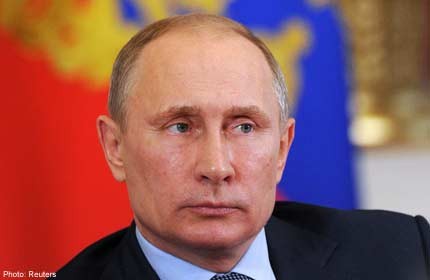Russia plans military build-up in Arctic

Russia has unveiled plans to build "cutting-edge military infrastructure" in the Arctic, in a bid to protect its interests there as the area becomes increasingly open to commercial exploitation, as well as with an eye on China.
A statement to that effect was posted earlier this week on the official website of Russia's Regional Development Ministry which manages Arctic affairs. The statement also said that Russian President Vladimir Putin "is about to issue executive orders" to "build a string of airbases" along the country's Arctic coast.
The Russians also talk about deploying brigades of troops and heavy military equipment. But it is far from clear that it has the massive financial resources required to follow through with such ambitious military plans.
Nor is it certain that Moscow will derive its anticipated huge riches from the Arctic.
The Arctic is seen by the Russians as their last promising frontier. It is assumed that it contains huge and hitherto untapped quantities of fish, as well as, possibly, the world's largest oil and gas reserves.
And, because of the effects of global warming, the region is becoming accessible to shipping. As late as 2007, thick ice-packs continued to blanket the northern shores of Russia's Siberian region, even during the peak summer month of August.
No longer: Most Arctic waters are now accessible to passage during the summer, and last year's August ice-cap was the smallest in recorded history, a mere 3.41 million square km compared to the sevenmillion yearly average.
That's potentially a huge boon for commercial shippers. Currently, a typical shipping route between Yokohama in Japan and Rotterdam in the Netherlands is about 20,000km.
However, if ships use the Northern Sea Route (NSR), which is not a single clearly defined corridor but a number of alternative passages across the top of Russia, they could shave off at least a quarter of the journey.
With about 20 per cent of Russia's territory in the Arctic, Mr Putin is understandably euphoric.
Not only would Russia be able to diversify away from its fast-depleting land-based oil and gas wells, but also the NSR would become a "critical international trade route", Mr Putin predicts.
The snag is that the NSR remains a contested waterway: Russia claims to control all the waters, while official US and European positions are that the route passes through international straits and is therefore beyond Russia's exclusive control.
The dispute has not erupted into the open largely because Western powers are themselves divided: Canada, which also controls a large chunk of the Arctic, has a legal position similar to that of Russia.
The decision in May this year by the Arctic Council, an intergovernmental forum for Arctic governments, to become more inclusive by granting permanent observer status to China, Japan, South Korea, India and Singapore has also contributed to keeping disputes peaceful.
Still, the Russians are worried by periodic hints from Chinese officials that Beijing may challenge both the Russian and Canadian sovereignty claims in the Arctic.
The Yong Sheng, a Chinese freighter, traversed the entire NSR in September precisely in order to make this case.
The Russians are responding by partly involving the Chinese in the exploitation of the Arctic - the China National Petroleum Corporation was granted offshore oil drilling rights this March - and partly by building up Russian military bases.
The deployment is also intended as a warning to the US-led Nato alliance in Europe which mounted a military exercise entitled Cold Response in Arctic waters last year.
For the moment, Russia has not provided details on where it plans to boost its military presence, but Western analysts guess that this will be around the Vilkitsky Strait and the Kara Sea, the northernmost points of the potential navigation route.
Russian officials claim to be planning for decades ahead. And although they are loath to admit it publicly, most of their military deployment plans are preparations for the day when the Polar Bear meets the Panda.
jonathan.eyal@gmail.com

Get a copy of The Straits Times or go to straitstimes.com for more stories.